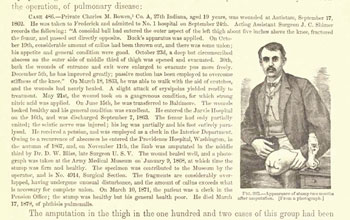Washington, the Scientific Capital
America’s first scientific capital was Philadelphia, by virtue of its population, public spirit, and commercial orientation but also through the looming figure of Benjamin Franklin, who was renowned throughout Europe for his pioneering research on electricity. The American Philosophical Society, the Library Company of Philadelphia, the Pennsylvania Hospital, and the College of Philadelphia all cemented the city’s claim to scientific primacy by the time of the American Revolution. As the seat of the federal government from 1790 to 1800, Philadelphia also hosted the U.S. Mint, the Patent Office, and the U.S. Census. In 1800, however, the national capital moved to Washington, DC, which soon became a natural rival to Philadelphia for leadership in the blossoming world of American science.
 Ironically, the first American president to preside in Washington, Thomas Jefferson, was one of the nation’s leading scientists but also an advocate of small government who discouraged federal support for scientific institutions and projects. His most crucial scientific initiative was supporting the Lewis and Clark Expedition (1803-1806), which made significant contributions to botany, natural history, geography, and ethnography. (Tellingly, Jefferson allowed the expedition’s collections and written records to reside at the American Philosophical Society in Philadelphia rather than in Washington, DC.) Jefferson also established the U.S. Coast Survey and donated his personal library to form the nucleus of the Library of Congress. Over time, Washington rose inevitably as a national center of science, and not only because of the federal government’s responsibility for issuing patents, regulating weights and measures, regulating currency, taking the census, facilitating navigation, and housing the national archives. The laying out of the District of Columbia and the city of Washington was by itself an exercise in geometrical design, producing engineering feats that set the standard for American architectural style for decades to come. After the War of 1812 destroyed much of Washington, public and private institutions, including the Columbian Institute for the Promotion of Arts and Sciences, the Washington Botanical Society, and the Naval Depot of Charts and Instruments allowed the city to rival even Philadelphia as a national capital of science.
Ironically, the first American president to preside in Washington, Thomas Jefferson, was one of the nation’s leading scientists but also an advocate of small government who discouraged federal support for scientific institutions and projects. His most crucial scientific initiative was supporting the Lewis and Clark Expedition (1803-1806), which made significant contributions to botany, natural history, geography, and ethnography. (Tellingly, Jefferson allowed the expedition’s collections and written records to reside at the American Philosophical Society in Philadelphia rather than in Washington, DC.) Jefferson also established the U.S. Coast Survey and donated his personal library to form the nucleus of the Library of Congress. Over time, Washington rose inevitably as a national center of science, and not only because of the federal government’s responsibility for issuing patents, regulating weights and measures, regulating currency, taking the census, facilitating navigation, and housing the national archives. The laying out of the District of Columbia and the city of Washington was by itself an exercise in geometrical design, producing engineering feats that set the standard for American architectural style for decades to come. After the War of 1812 destroyed much of Washington, public and private institutions, including the Columbian Institute for the Promotion of Arts and Sciences, the Washington Botanical Society, and the Naval Depot of Charts and Instruments allowed the city to rival even Philadelphia as a national capital of science.
Washington, DC, came into its own as a scientific center during the 1840s when Congress created the National Institute for the Promotion of Science, the U.S. Naval Observatory, and the Smithsonian Institution (1846). The famed “Smithsonian Castle,” headquarters for the growing complex of museums and research centers, quickly became a landmark and a symbol of the federal government’s new interest in and support for American science. The U.S. Exploring Expedition, which circumnavigated the globe between 1838 and 1842, deposited tens of thousands of its specimens in the Smithsonian, as did the many western missions of exploration that Congress funded during the 1850s. The Smithsonian’s Secretary, Joseph Henry, who was beyond question the most influential American scientist of his era, elaborated on Franklin’s legacy by experimenting with the electrical technology that made the invention of the telegraph feasible during the 1840s. Beginning in 1857, the Smithsonian attracted a knot of influential scientists to Washington, who met regularly as the Megatherium Club (named after an extinct species of giant sloth) throughout the Civil War.
The war itself boosted the city’s claim as America’s scientific capital. The War Department moved from West Point, New York, to Washington, DC, innovating new forms of weaponry, communication, transportation, and naval design. Abraham Lincoln, the only U.S. president to hold a patent, took a personal interest in invention and scientific innovation as the Civil War unfolded. He encouraged development of the first aerial combat balloons, machine guns, and ironclad vessels and was a pioneer in the use of the telegraph as a modern management tool. In 1863, Lincoln approved creation of the National Academy of Sciences to “investigate, examine, experiment, and report upon any subject of science or art” that might be immediately useful during wartime. (Today, election to the National Academy is one of the highest honors available to American scientists.) During the war, Congress established a range of additional scientific institutions, including the Army Medical Museum, the Department of Agriculture, and the Bureau of Navigation, to support and coordinate scientific, technological, and medical advances throughout the nation.

